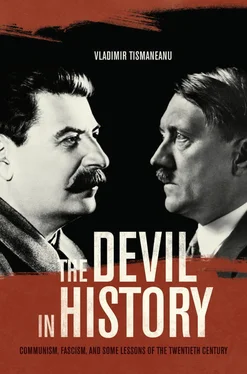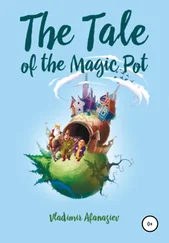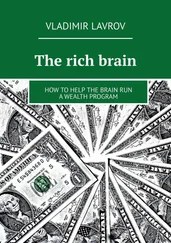What happened in Nazi and Communist camps (Pitești was for all practical purposes such an institution) was bound to destroy basic features of humanity such as compassion, reason, and solidarity. 2Historian Timothy Snyder superbly concluded his essential work Bloodlands by stating that “the Nazi and Soviet regimes turned people into numbers…. It is for us as humanists to turn the numbers back into people.” 3The basis for these horrors was the conviction that human beings can become subjects for radical social engineering conducted by self-appointed custodians of universal happiness. To paraphrase a historian, the twentieth century became destructive once “the historically self-conscious presumption that contingency abounds and has to be managed, that chaos is about to take over and has to be negotiated, that society can be designed and revolution made” 4became the justification for sacralizing the political and converting it into a substitute for traditional religions. This book is a comprehensive, comparative essay on the intellectual origins, the crimes, and the failure of the radical totalitarian movements that ravaged the last century: Communism and Fascism. It therefore starts from the premise that in this “age of extremes” (Hobsbawm) the question of evil is the basic question. 5
For Polish philosopher Leszek Kołakowski, Bolshevism and Fascism represented two incarnations of the disastrous presence of the devil in history: “The devil… invented ideological states, that is to say, states whose legitimacy is grounded in the fact that their owners are owners of truth. If you oppose such a state or its system, you are an enemy of truth.” 6Both movements pretended to purify humanity of agents of corruption, decadence, and dissolution and to restore a presumably lost unity of humanity (excluding, of course, those regarded as subhuman, social and racial enemies). For the Communists, the fiend was represented by private property, the bourgeoisie, the priests, the kulaks. The Nazis identified the Jewish “vermin,” “Judeo-Bolshevism,” “Judeo-plutocracy,” and Marxism as the sources of all calamities. Fascism (and its radical version, Nazism) was adamantly anti-Communist. In the 1930s, Stalinism made anti-Fascism a pillar of its propaganda, seducing intellectuals and galvanizing resistance movements worldwide. Indeed, in the absence of anti-Fascist rhetoric, it is hard to imagine Stalinism becoming such an extraordinary magnet for so many otherwise intelligent and reasonable individuals. These people were convinced that by supporting the Popular Fronts, especially during the Spanish Civil War, they were opposing Nazi barbarism. The Communist International’s propaganda machine defended human rights against the abominable atrocities perpetrated by the Nazis, obscuring the fact that, until 1939, most mass crimes in Europe were in fact committed by Stalinists in the USSR. 7
Both revolutionary party-movements execrated and denounced liberalism, democracy, and parliamentarianism as degradations of true politics, which would transcend all divisions through the establishment of perfect communities (defined as classless or racially unified). Fundamentally atheistic, both Communism and Fascism organized their political objectives in discourses of alleged emancipation, operating as political religions meant to deliver the individual from the impositions of traditional morality and legality. 8To employ Italian political thinker Emilio Gentile’s terminology, both were forms of a sacralization of politics of an exclusive and integralist character that rejected “coexistence with other political ideologies and movements,” denied “the autonomy of the individual with respect to the collective,” prescribed “the obligatory observance of [their] commandments and participation in [their] political cult,” and sanctified “violence as a legitimate arm of the struggle against enemies, and as an instrument of regeneration.” 9In the universe of these political movements, evil carried the name of those who refused, rejected, or did not qualify for the illumination delivered by the infallible party gospels. In the case of left-wing totalitarianism, historian Igal Halfin provides an excellent formulation: “The apotheosis of Communist history—humanity holding hands and marching toward a classless paradise—cannot thus be disassociated from Stalin’s systematic attempt to eliminate those who reached the Marxist well but refused to drink from it.” 10Or, to turn to Nazism, for Hitler, Jews incarnated evil simply because for him they fell below the pale of humanity. They were simultaneously cowardly and omnipotent, capitalist and Communist, ostentatious and insidious, and so on. After seeing with Goebbels the so-called documentary The Eternal Jew , a piece of heinously crude propaganda, the German dictator concluded that “these are no longer human beings. They are animals. So it’s not humanitarian but a surgical task. Otherwise Europe will perish through the Jewish disease.” 11
Psychological and psychopathological explanations for these uniquely murderous regimes are not sufficient. Whereas Stalin and Hitler were in-controvertibly driven by paranoid exclusionary and exterminist impulses, it would be hard to consider Lenin a mentally unbalanced individual. As a matter of fact, even a staunch critic of Bolshevism like Christian existentialist philosopher Nikolai Berdyaev saw Lenin as a paradoxical personality, an antidemocratic, neo-Jacobin revolutionary, yet a humane individual, animated by a thirst for equality and even a passion for freedom. Moreover, an additional dilemma that haunts any attempt at understanding the horrors of the twentieth century lies in the difficulty of fathoming “the level of the pathological debauchery accepted, approved of, and sustained by masses of people—including highly intelligent ones—and coming to be regarded as normal and justifiable practice.” 12Here is where the understanding of Fascism and Communism’s revolutionary passion becomes vital. It is this spirit of radical transformation and renewal that mobilized the masses who pushed forward both movements throughout their existence. Fascism and Communism were incarnations or materializations of “a revolutionary experience of standing on the edge of history and proactively changing its course, freed from the constraints of ‘normal’ time and ‘conventional’ morality.” 13Both were born in the wreckage of the First World War in a Europe that seemed to have entered a new era where politics had to be radically redefined toward the glorious dawn of new left or right civilizations.
In fact, the catastrophe started earlier, in the Bolshevik apocalyptic vision of an unprecedented break with all liberal values and traditions, including the pluralist ethos of international social democracy. Going beyond the established comparisons between Hitler and Stalin, historian Robert Gellately brought Lenin back into the story of totalitarian political movements as the true architect of the Bolshevik dictatorship, the real founder of the gulag system, a fervent ideologue convinced that his vanguard party (a revolutionary political invention that shattered the praxis of international social democracy) was entrusted by an almost mystically defined history to achieve its goals and make humanity content forever, no matter the human costs. And the costs were indeed appalling, defying our capacity for representation. Ideological fanaticism mixed with all-consuming resentment explain Lenin’s destructive ambitions. Lenin was not only the founder of political propaganda, the supreme priest of a new ecclesiology of the omniscient, infallible party, but also the demiurge of the concentration camp system and the apostle of universal terror. A true Bolshevik, Martin Latsis, one of the Cheka’s leaders, said in 1918, “We are not waging war on individual persons. We are exterminating the bourgeoisie as a class. During the investigation, we do not look for evidence that the accused acted in deed or word against the Soviet power. The first questions you ought to put are: to what class does he belong? What is his origin? What is his education and profession? And it is these questions that ought to determine the fate of the accused.” 14
Читать дальше












